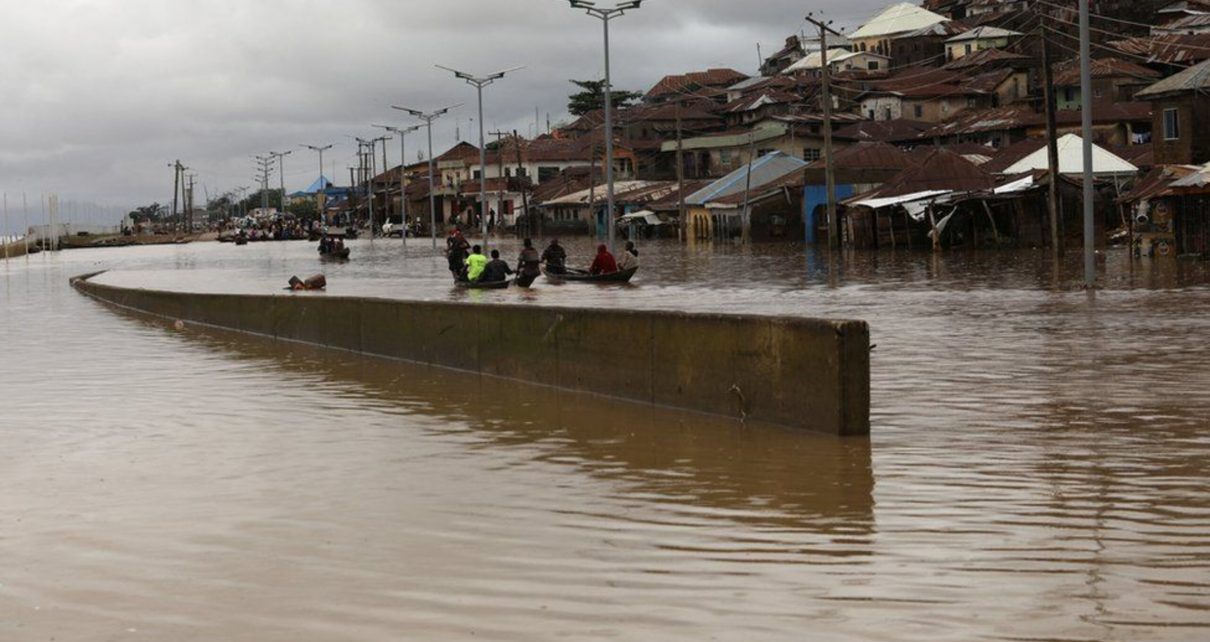The current floods, which hit Nigeria after Cameroonian authorities released water from their Lagdo Dam, have affected more than 2.5 million people.
Out of this total, 603 people died, 2,407 were injured, and 1.3 million people were displaced.
The Minister of Humanitarian Affairs, Disaster Management, and Social Development, Hajiya Sadiya Umar Farouq, disclosed these figures at a press conference on Sunday in Abuja while outlining Nigeria’s preparation for a meeting with the Government of the Republic of Cameroon regarding the release of water from Lagdo Dam.
Additionally, Farouq directed state administrations with stepping up efforts to evacuate flood victims to higher ground.
According to her, 108,392 hectares of farmland were partially damaged, 121,318 residences were partially damaged, 82,053 buildings were fully devastated, and 332,327 hectares of farmland were totally ruined.
“While we mourn the unfortunate boat mishap in Anambra and other locations, please, we must note that we are not completely out of the woods,” Farouq said.
She warns that up until the end of November, states like Anambra, Delta, Cross River, Rivers, and Bayelsa still run the risk of experiencing flooding.
“So, we are calling on the respective State Governments, LGAs and Communities to prepare by evacuating people living on flood plains to high grounds, providing tents and relief materials, fresh water as well as medical supply for possible outbreak of water borne disease”.
Farouq noted that the Nigerian Meteorological Agency (NiMet) had published its Seasonal Climate Prediction for 2022 on February 15 and informed Nigerians that the rains in 2022 will be more intense and prolonged.
She also mentions that the Annual Flood Outlook was released by the Nigeria Hydrological Services Agency on May 12.
According to her, “immediately after these two releases, the National Emergency Management Agency (NEMA) was all out in the media and went to all States and FCT.
“NEMA warned of expected floods and advised on mitigating and preparedness actions needed to take to minimize losses and damages.
“I also briefed the National Economic Council on Sep.22, where I outlined preparedness strategies that all State Governments should take to mitigate the 2022 floods.
“I have laid this background so that you will appreciate the concern of this Ministry, that despite all these efforts, we still appear to have become overwhelmed by the flood when it came.
“However, we must initiate a bilateral discussion with authorities in Cameroon in November on the periodic opening of the Lagdo dam.
“The delegation to Cameroon is to be led by the Permanent Secretary of the Ministry, and the Ministry of Foreign Affairs will be requested to facilitate the meeting,” Farouq said.
Farouq claimed that there was ample knowledge and warning of the flood of 2022, but that States, Local Governments, and Communities didn’t seem to pay attention.
“There is the need for State Governments to invest in flood management and lead on community base flood early warning systems; hence we called on State Governments to take greater responsibilities for flood preparedness and response.
“We are calling on the respective State Governments, LGAs and Communities to prepare by evacuating people living on flood plains to high grounds, providing tents and relief materials, fresh water as well as medical supply for possible outbreak of water borne disease”.


